KC COLUMN: DIGGING THROUGH THE ARCHIVES
by KC Carlson
I’ve been thinking about the DC Archive series quite a bit lately. As a cost-cutting measure over the past year, and because of our recent move (we really didn’t need more books to move cross-country), I stopped buying them to save money. As it turns out, this may have been the wrong thing to do. (More on this later.)
Also, the DC Archives program has gone through a number of changes over the past several years — not all of them good ones. For a while, fans were wondering if the lack of new Archive volumes meant that the series was finished. Over the past year, however, new Archives have been on the schedule — and some of the newer titles have been quite esoteric (like Sugar and Spike and Lois Lane). But something else has been going on in the behind-the-scenes decision-making regarding the DC Archives line which has had ramifications on many of the new volumes.
ARCHIVING THE ARCHIVES
I’m getting a little ahead of myself. For those who don’t know, the DC Archives program has been a long-running series of hardcover archival-quality collections featuring the early (and long out of print) adventures of DC’s major characters and series, mostly reprinting stories from the Golden and Silver Ages of comics. The vast majority of the Golden Age stories had never been previously reprinted until these volumes first appeared.
Long-time DC fans can remember infrequently seeing older stories in 80-Page Giants, 100-Page Super Spectaculars, or DC Treasuries, but most of these were stories that had surviving film or photostats that could be used for reprinting. Film or stats for most Golden Age work were not saved/archived, so many classic stories could not be reprinted affordably. To publish them would require extensive and expensive restoration, much of it quite crude and destructive. One early restoration method was to bleach the color out of actual comic pages until just the black lines remained. (Well, sorta — they usually had to be retouched.) The problem with this method was that it required two complete original comics, as working on the one page usually destroyed the linework on the reverse side. When you had to deal with the prices of many Golden Age original comics (some of them thousands of dollars a piece!), well, it’s safe to say that this was not a cheap process.
The saddest thing I ever saw was some of DC’s legendary bound volumes of original Golden Age comics being sliced apart to be used for some of the early Archives volumes, when it proved impossible to find scarce original comics. Not to be too maudlin about it, but those brave original comics gave their lives so that thousands of reproductions could be born to share with the world. Nowadays, most everything can be done on computer (although there’s still extensive touch-up work to do), so elderly comic books no longer have to be sacrificed.
CROSS-TOWN INSPIRATION
It’s hard to deny that the DC Archives series wasn’t at least partially inspired by the early Marvel Masterworks volumes, which began appearing in September of 1987. Each of the early Masterworks collected the first 10 issues of Marvel’s most popular series, beginning with Amazing Spider-Man, quickly followed by Fantastic Four, X-Men, and Avengers. These were all deluxe hardcover volumes, with dust jackets and slick, glossy paper, and were an immediate hit.
DC took notice. Richard Bruning and Dick Giordano developed a plan to begin a similar program at DC. What they came up with was slightly different than Marvel’s, with the desire to collect the adventures of DC’s two most popular characters — Superman and Batman — starting from their groundbreaking appearances in the late 1930s, which were some of the most influential comic books of the Golden Age. (The Justice Society, in All-Star Comics, and Wonder Woman were added after the line was established.) Since they were dealing with such historical material, and because Bruning was coming at the project from a design and fine arts background, it was decided early on to treat the project as a true archival effort. Many of these stories were long “lost” and seldom reprinted (save for the seminal origin stories). Bruning insisted on the project using a special paper stock (creamy, not glossy, in layman’s terms, and thick), upscale archival binding, and a high level of design work, including a uniform “look” for the entire series.
Restoration of the original artwork was going to be a big problem, since original film or useable stats were just not available for much of this material. DC began the Archive series with what was accepted as industry standards for such reproduction work, ultimately rejected them, and enlisted experts to develop new methods. Most of the restoration work has been done by Rick Keene, who by now has restored thousands of pages. In the early days, he was assisted by both Dale Crain and Bhob Stewart, with Crain also becoming Editor for many of the Archives volumes.
Paul Levitz became an early champion of the DC Archives project when he signed off on the then-iffy proposition of creating high-ticket items with huge production costs — but as both a longtime historian of the field as well as ultimate caretaker of the DC characters, he knew that this was going to be an important and historical project. Bob Greenberger has told me of an executive meeting around 2005 regarding the Archives. When it came time to discuss adding new titles to the project, that involved DC’s comic book collectors (including Levitz, Greenberger, Bob Wayne, Georg Brewer, and others) pulling their Want Lists out of their wallets to use as starting points for discussion, much to the amazement of other non-collector DC executives.
I’m not 100% sure of this, but I think that it was Levitz’s idea to accelerate the introduction of the Silver Age Archive line (beginning with the popular Justice League of America and Legion of Super-Heroes) to help monetize the program. Since film existed for most of the Silver Age material, those Archives would be less costly to produce and would help fund the production-heavy Golden Age volumes. The Archives would constantly switch back and forth between Golden and Silver Age material throughout its publication history.
PERSONAL ARCHIVING
The first DC Archives arrived in 1989, beginning with Superman Archives in October, with Batman Archives following in June 1990. I first arrived at DC right about then as Richard Bruning’s assistant and immediately got swept into helping on the Archives, mostly on quality control. While the Archives were never an actual assignment for me, they were a large part of my personal history while at DC, mostly because I worked with (and occasionally shared living spaces) for a number of years with people such as Bruning and Crain. Both of them were extensively involved with producing and editing the Archives, and I ended up helping out by default. I spent many late nights with Dale, mostly keeping him company while he was at the drawing board carefully touching up linework or performing other restoration work.
I was also honored to be asked to write two introductions for the Archives series, for the Legion of Super-Heroes Archives Volumes 4 and 9. It’s not just anyone who gets invited to contribute to the Archives, and I’m humbled to be there alongside so many notable creators and historians.
Even after I left DC, in late 1997, Dale invited me back to help out on the Archives when they were going through a busy period. I mostly photocopied pages from the bound copies to make dummy books for the printers and checked and double-checked proofs and bluelines, but it was important work, as these were expensive books that shouldn’t get messed up by something as stupid as out-of-order pages. (Something that occasionally happened, but not on my watch.) Johanna and I had decided to get married in NYC, so I went up early to help out for a few weeks before, and Dale kept me busy right up to the ceremony. Plus, we got to party afterwards with all our DC friends!
EXPANDING THE ARCHIVES
Once the esoteric Golden Age Superman and Batman material was completed (including such rarities as solo stories from World’s Finest), Silver Age Archive series were also begun for both Batman and Superman. Oddly, they started in different eras: Superman in the late 50s, and Batman with the 1964 Julie Schwartz-edited “new look”. Makes you wonder how much DC really does hate the late 50s/early 60s Jack Schiff-edited sci-fi and gimmick Batman stories, which were the staple of the very popular Batman 80-Page Giants of the 60s.
Eventually, the Archives got into more esoteric material. Doom Patrol sold surprisingly well, as did Jack Kirby’s early Challengers of the Unknown. Jack Cole’s Plastic Man also did very well, as did collections of the seldom seen early Captain Marvel (Shazam!) material. I’ve always been very pleased to see the ongoing Wonder Woman and Sgt. Rock series.
Here’s a couple things you probably didn’t know about the DC Archives: Attendees to Superman co-creator Jerry Seigel’s DC memorial service in 1996 were surprised to find a copy of Superman Archives Volume 1 on their seats, as a very special memorial gift. I believe the same was done with the first Batman Archives at Bob Kane’s memorial, although I wasn’t in attendance for that one.
Also, remember this 2010 hardcover collection featuring early Superboy stories by Siegel and Shuster (and others)?
It was originally supposed to be Superboy Archives Volume 1. Unfortunately, I can’t tell you why plans changed. But some of you can probably guess if you’ve been following the news about Siegel and Shuster over the past few years.
THINGS CHANGE
Under Levitz’s watch, the DC Archives would always be in print, and several volumes were popular enough to go through several reprintings. This is apparently no longer true. I recently asked Bob Greenberger, whose long comic history includes being involved with the Archives program, what was going on. He replied:
“It used to be that Archives were kept in print. Then they were allowed to go out of print. Then they reversed that and decided to keep the full run in print. At least that’s what it used to be. Today, who knows?”
So I did some searching. There’s a great DC Archive Message Board at (of all places) The Marvel Masterworks Fansite. Once there, I discovered a list of over 50 DC Archive volumes that are now apparently Out-of-Print (OOP). Including several that I didn’t buy last year. Rats.
Wait, this is even better… DC recently announced that an Archive that they haven’t even published yet (Metal Men Volume 2), is already OOP. So if you didn’t pre-order it, you are probably S.O.L. Which further makes me think WTF? (And not about their upcoming ridiculously named stunt to trade cash for odd stories.)
Under the current DC regime, the Archives are not the priority they once were. Sales have slipped over the years, probably due to increasing cover prices and decreasing page counts. (Notably, there has been a recent move toward much larger volumes: The Captain Comet Archives currently being solicited is a 400-page volume for $75.00, where Archives used to be 200-some pages.) A change of printers also triggered a change in paper stock away from the traditional buff archival stock previously used. It’s now a glossy, thinner stock. I’m not an expert, but I suspect the binding has changed as well.
In 2008, it was thought that the Archive line was going to be halted, as production of new Archives substantially slowed, which probably had a lot to do with economic factors at that time. Since then, they’ve slowly built back the line, continuing existing runs (it would be a real shame if the Golden Age runs of Superman, Batman and Wonder Woman were halted before they were complete), and added some new obscure but fan-friendly series (Metal Men, Lois Lane, Sugar and Spike, Captain Comet). It will be interesting to see if sales are good enough for them to continue (although Metal Men Volume 2 is imminent and Captain Comet will be a done-in-one volume).
REPURPOSING THE ARCHIVES
It’s also interesting to see what DC is doing with the newly restored material. Chronicles series featuring DC characters/series have been running for years, with Superman, Batman, and Wonder Woman volumes covering the Golden Age, while Silver Age series like Green Lantern, The Flash, and the upcoming Justice League of America are also popular. What’s great about these series for fans is that all the stories are presented in chronological order, which doesn’t mean much for the Silver Age series, but it’s fantastic for the Golden Age characters, as it incorporates material from Action Comics, Detective Comics, Sensation Comics, solo stories from World’s Finest, and other more obscure sources, putting them in context with the stories from the character’s self-titled series. All of these books take advantage of the work that was done restoring them for their original Archives appearances, in a much more affordable format for fans with tight budgets. Bob Greenberger notes “the Chronicles line was the clever way to offer softcover versions of the Archives without offering softcover versions of the Archives, which retailers and price conscious fans had been demanding”.
Also fascinating is DC’s first compilation of Golden Age material in their popular Omnibus format. Superman: The Golden Age Omnibus Volume 1 collects almost 800 pages of the Man of Steel’s earliest adventures (from Action Comics #1-31, Superman #1-7, and his early appearances in the New York World’s Fair anthologies). This is the equivalent of about 3-4 original volumes of the original Archives for the price of one current one ($75), and it was made possible by the restoration work first used for the original Archives. It is hoped that this new series does well enough to also help drive the creation of new volumes of the original Golden Age Archives — at least to the point where the Big 3 can finish their GA runs.
Obviously, I’m a big fan of the DC Archives series (and the Marvel Masterworks as well –I’ll have to write about them someday soon) and want to do everything that I can to make sure that these series somehow continue to thrive. The Golden Age material is particularly important, as so much of it is seldom seen and either expensive or impossible to collect in the original form. Sometimes I think casual or current comics fans (and maybe, sometimes, the publishers themselves!) don’t understand exactly how important these series are to the ongoing reclamation of comic book history. Beyond collector’s wants, it’s also important to remember how the archival format makes these a great investment for libraries or other sites interested in maintaining historical reference material.
And you just thought the DC Archives were about reading funny or strange old comic book stories, didn’t you?
__________________________________
KC CARLSON SAYS: Corrections or clarifications are welcome on this one. I wrote this one pretty much from my (rapidly) fading memories. Special thanks to Bob Greenberger. This one’s dedicated to Dale and Richard (and Karen) for letting me crash on their couches, all those years ago!
WESTFIELD COMICS is not responsible for the stupid things that KC says. Especially that thing that really irritated you.


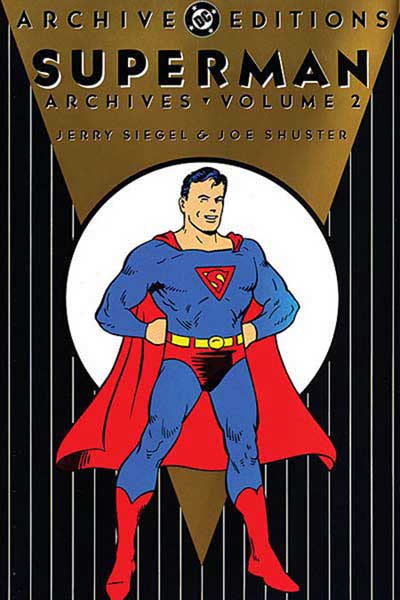
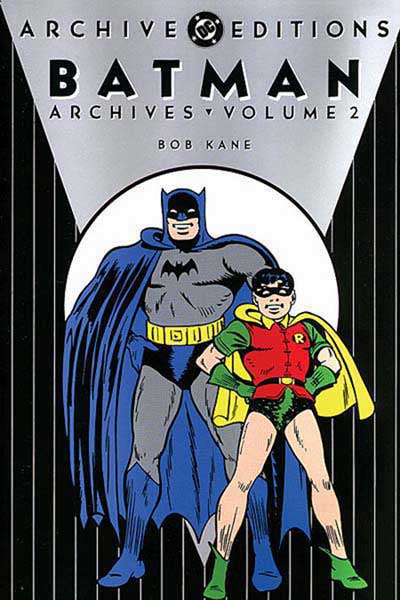
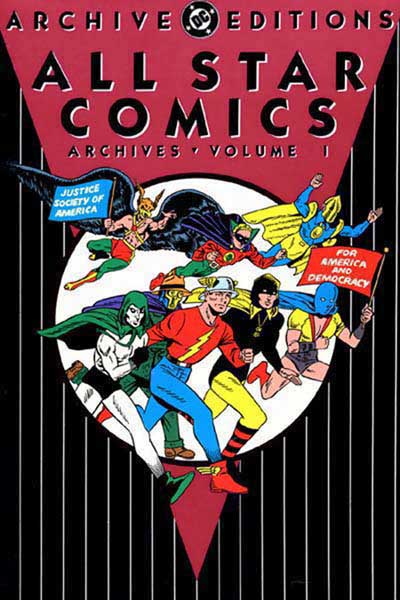
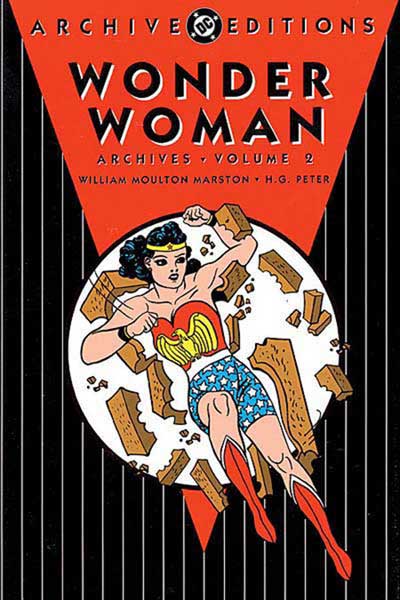
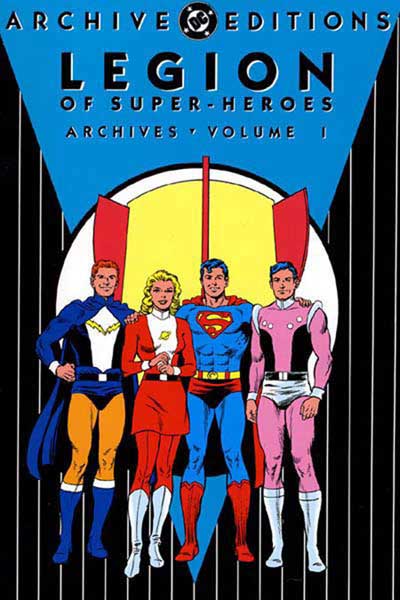


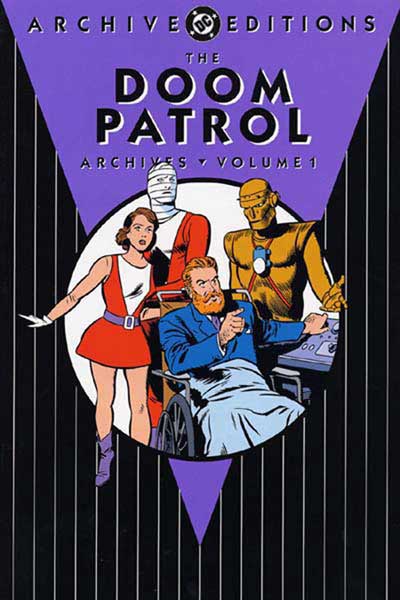
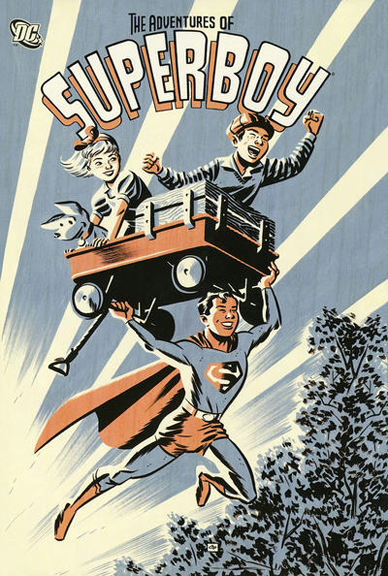

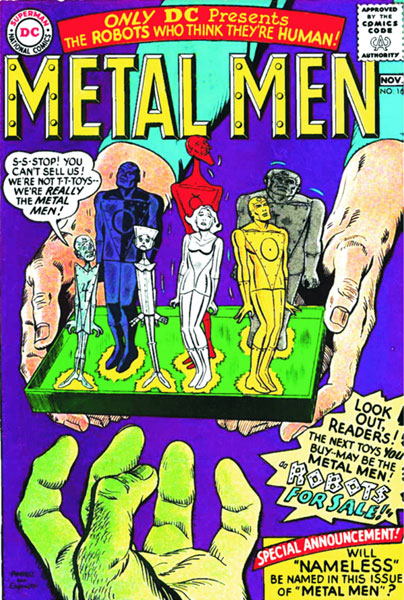
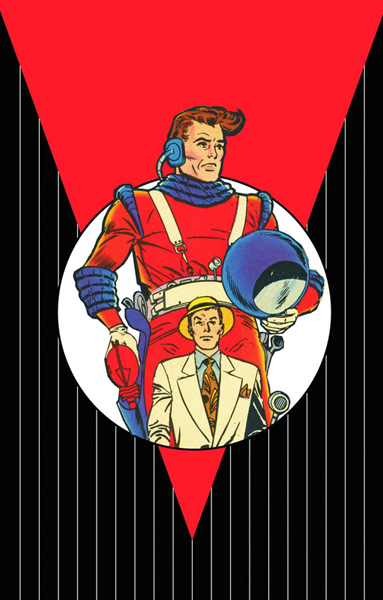
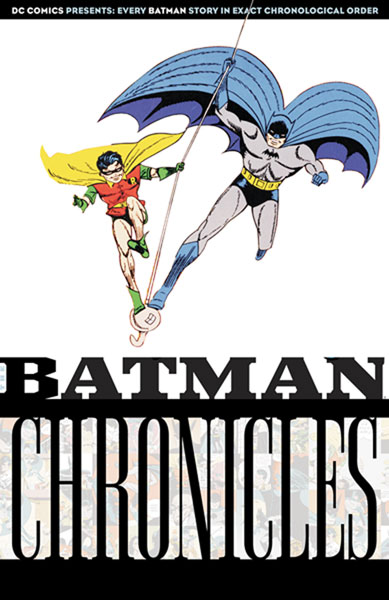

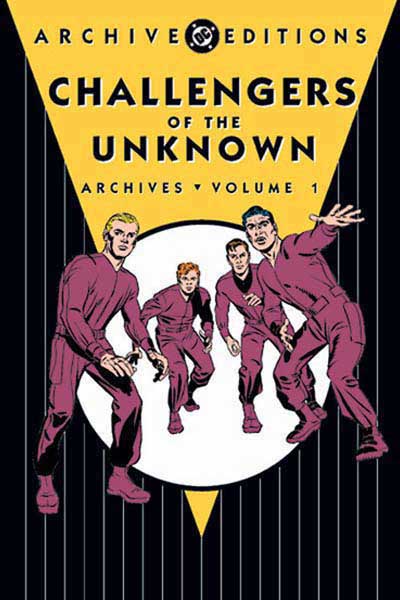
USER COMMENTS
We'd love to hear from you, feel free to add to the discussion!